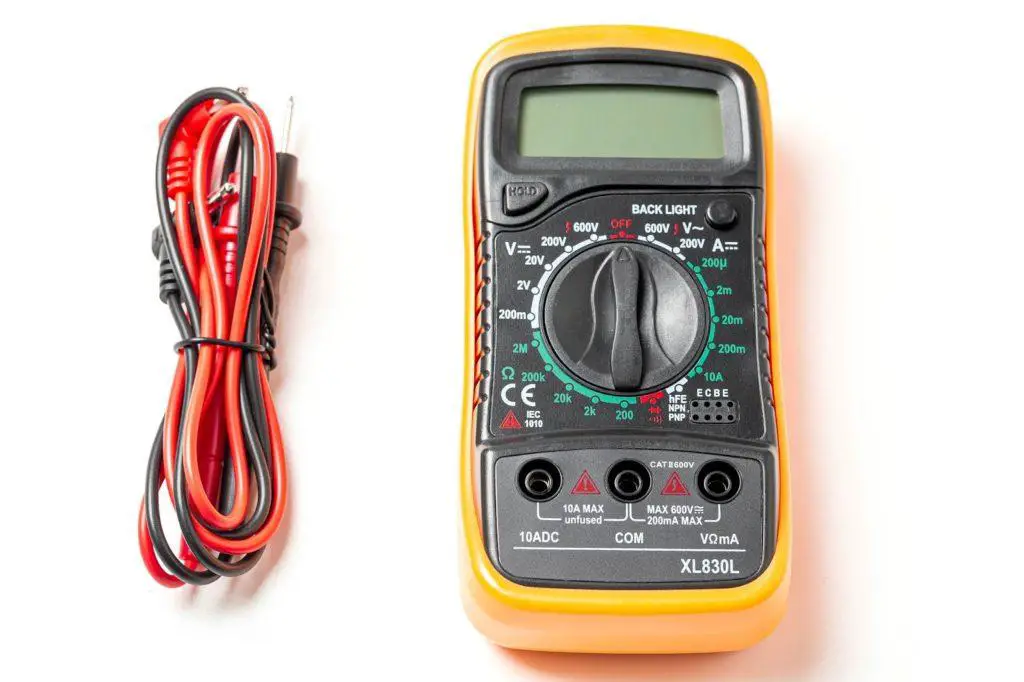Modern cars typically use a 12V battery—a fully charged car battery should read around 12.6V when the car is at rest. The reading is around 13.5 to 14.8V when the engine is running.
There are many things that can affect a car battery’s voltage. Regular testing of your car battery is the way to determine how well your battery is doing.
In this guide, you’ll learn how many volts is a car battery and how to check for that. We’ll then explore how to remedy a low battery voltage and provide tips on how to keep your car battery healthy.
Jump To
How Much Voltage Does a Car Battery Have?
A modern car battery is labeled 12V, but it should read more than that when the engine is both resting or running.
If the battery is healthy, 12 volts is normally enough for a car to start, but the voltage reading should be a little higher.
Let’s discover the optimal voltage range of a healthy and fully charged car battery.

Flickr Image by Nenad Stojkovic
- Engine Idle
A resting car battery should read 12.6 volts, which indicates a fully charged battery—naturally, the lower the voltage, the less charge your car battery holds.
The optimal range is between 12.4 and 12.6 volts.
If the reading is 12.2 volts or less, your car battery is low and needs to be recharged or checked. Anything less than 12V might not be enough to start your engine.
- Engine Running
When your car engine is running, a 12V battery will read close to 15V.
The alternator is to thank for that! It not only powers the car’s electrical system when it’s on but also sends a flow of current that charges the battery power. It is the reason why car batteries are maintained near a fully charged state for so long.
An optimal range for a healthy battery is between 13.5 and 14.8 volts. As the battery gets old, it might read slightly less, which is usually fine. However, if it gets below 13 volts when the engine is on, the battery might be bad or discharged.
How To Test Your Car Battery’s Voltage
Checking your car battery voltage will give you an idea of its health.
Here are a few ways to check how many volts your vehicle’s electrical system is running on.
Using a Voltmeter
The easiest and fastest way to determine your car battery’s voltage is by using a digital multimeter or voltmeter. If you haven’t got one already, they are widely available and not expensive.
It’s recommended not to test your battery immediately after you turn off the engine. Instead, let it rest for a couple of hours to get an accurate reading on your battery’s health; otherwise, you might get a higher reading than normal.
When you’re ready to check your battery voltage, set your voltmeter DC voltage to 20V since you’re expecting a reading between 0 and 20 volts.
Next, attach the positive and negative ends of the voltmeter cables to the appropriate battery terminals.
If you reverse the cables, you’ll get a negative reading, but it’s still accurate if you ignore the minus sign. Of course, this doesn’t work on analog voltmeters.
If you read a value between 12.4 and 12.6 volts, your battery is well-charged.
If it’s between 12.2 and 12.4 volts, there’s nothing to worry about, but you might consider recharging the battery or testing it more frequently to make sure it doesn’t go below that.
If it’s lower than 12.2 volts, you have a low-voltage battery, and it is on the verge of being discharged. You need to have it checked or recharged as soon as possible.
Now, start your engine or, better yet, have someone do that for you. Either way, you need to measure the battery’s voltage quickly.
If it falls within an optimal range of 13.5 to 14.8 volts, you are good. If you had a good reading when the engine is idle, but the voltmeter shows a value between 13 and 13.5 volts when the engine is running, it’s still not bad.
However, if a running car’s battery reads less than 13 volts, it is not operating as it should. Again, you should either recharge or have your car battery checked.

Flickr Image by Marco Verch Professional Photographer
Alternatives to a Voltmeter
You can check your car battery without using a voltmeter, although not quite as accurately.
To do this, leave the engine off, switch on the headlights, and check the brightness of the lights. Leave them on for 10 to 15 minutes.
Next, start the engine and quickly observe the headlights. If they got dimmer than they were before or, worse yet, turned off completely, there’s something wrong with the battery.
A healthy car battery should easily hold its charge for 15 minutes before you start the engine.
If your engine took a while to start or you heard a clicking noise as you turned it off, the battery is either low or damaged.
You want your headlights to be equally bright before and after starting the engine.
This won’t give you an accurate voltage reading, but if your car battery fails this test, it’s a sign that it’s not working properly.
Alternatively, you can also refer to a car battery voltage chart.
Using a Load Tester
Load testing is another accurate method to check your battery voltage. For this, you need to attach the load tester cables to the battery terminals as you would do with a voltmeter.
To get accurate readings, you need a real carbon pile load tester.
A load tester will first give you a voltage reading which should fall within the optimal range mentioned earlier. Press the button to initiate the load test but don’t leave it on for long, as it will exhaust your battery. 10 to 15 seconds is fine.
This applies a load on your battery which simulates freezing temperature conditions. The reading should drop but never below 9 volts. Ideally, it should be between 9.5 and 10 volts.
This method is very effective since it provides your battery’s actual voltage as well as its voltage under load.
How Often Should You Check Your Car Battery Voltage?
It’s recommended to check your car battery twice per year.
Of course, your battery will be checked when you get it serviced, so you’re advised to check it yourself at least once every year.
If you don’t have the proper equipment to test your car battery voltage, you can still book an appointment for a technician to check the battery and perform the necessary routine inspections.
What to Do When Your Car Battery Voltage is Too Low
Although a low battery can be fixed in many cases, it may suggest a battery or alternator problem.
If you find that your car battery is too low or completely discharged, here’s what you can do.
Jump Starting the Battery
Carrying a portable jump starter in your car is necessary, especially when you have a low battery.
If your battery dies and your car won’t start, a jump starter usually fixes that, assuming nothing is damaged.
A jump starter also charges your car battery and returns it to an operable state. You can test your battery after jump-starting it to be sure.
If you jump-start your battery and it still gives a low reading, either your battery or your alternator needs to be replaced.

Flickr Image by Phil and Pam Gradwell
Charging the Battery
If your car battery voltage is too low, the best thing to do is to charge it before it fails.
Be sure to use a quality charging system that is appropriate for the battery you have. Don’t forget to check the voltage afterward.
Replacing the Battery/Alternator
If none of the above works, your battery or alternator has probably gone bad and needs to be replaced.
It’s a good idea to send it to a technician to check the source of the issue and decide how to proceed.
How to Maintain Your Car Battery Health
The voltage of your car battery can easily become low. By keeping it in good condition, your battery should have enough volts to operate well.
Keep Your Car Battery Charged
It’s recommended never to leave your car battery undercharged for long periods of time. You need to test it regularly and charge it whenever it’s lower than it should be.
Regularly Drive Your Car
Using your car is actually the surest way to maintain the battery charge, and the alternator will take care of the hard work for you. If left unused for a month or two, especially in cold weather, the charge can start to dissipate.
If you’re not using your car often, be sure to start the engine for 15 to 30 minutes or take it for a little spin once every week.
If you can’t drive your car, there are ways to preserve your battery:
- Install a battery maintainer to keep your battery charged.
- Disengage the security systems that would otherwise drain your battery.
- Disconnect the battery’s negative terminal – not the positive one.
- Disconnect the battery altogether and store it in a cool, dry, and well-ventilated place.
Switch Off Electronics When Engine is Off
When the car is not running, the electronic accessories are powered by the battery rather than the alternator. They will quickly drain the battery, which is why you need to turn them off as soon as you turn off your car engine.
Final Thoughts on how many volts is a car battery
Testing your car battery’s voltage is a great way to make sure it’s working properly. This is best done using a voltmeter.
A healthy and properly charged battery has 12.6 volts when the engine is off and between 13.5 and 14.8 volts when the engine is running.
It’s necessary to test your battery periodically to make sure it doesn’t go below the acceptable range.

4 thoughts on “How Many Volts is a Car Battery?”
Comments are closed.